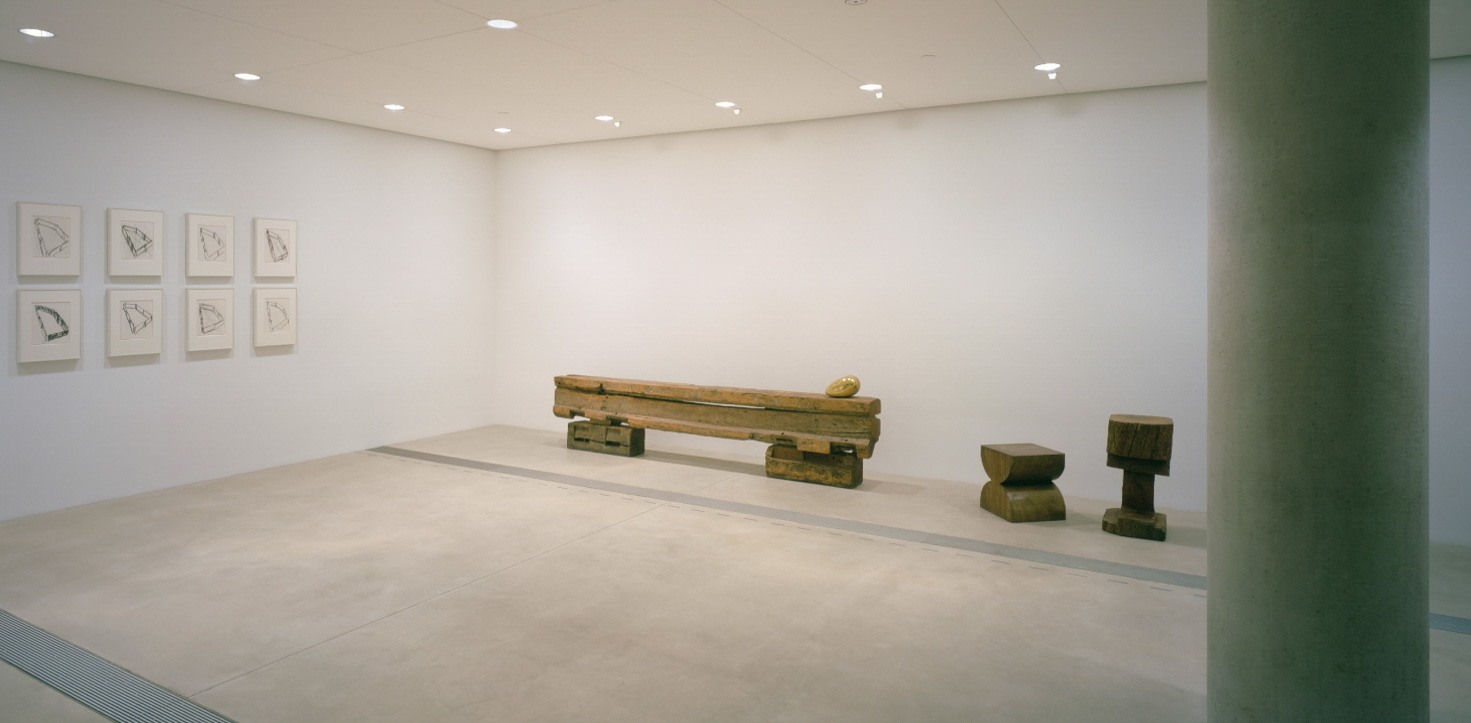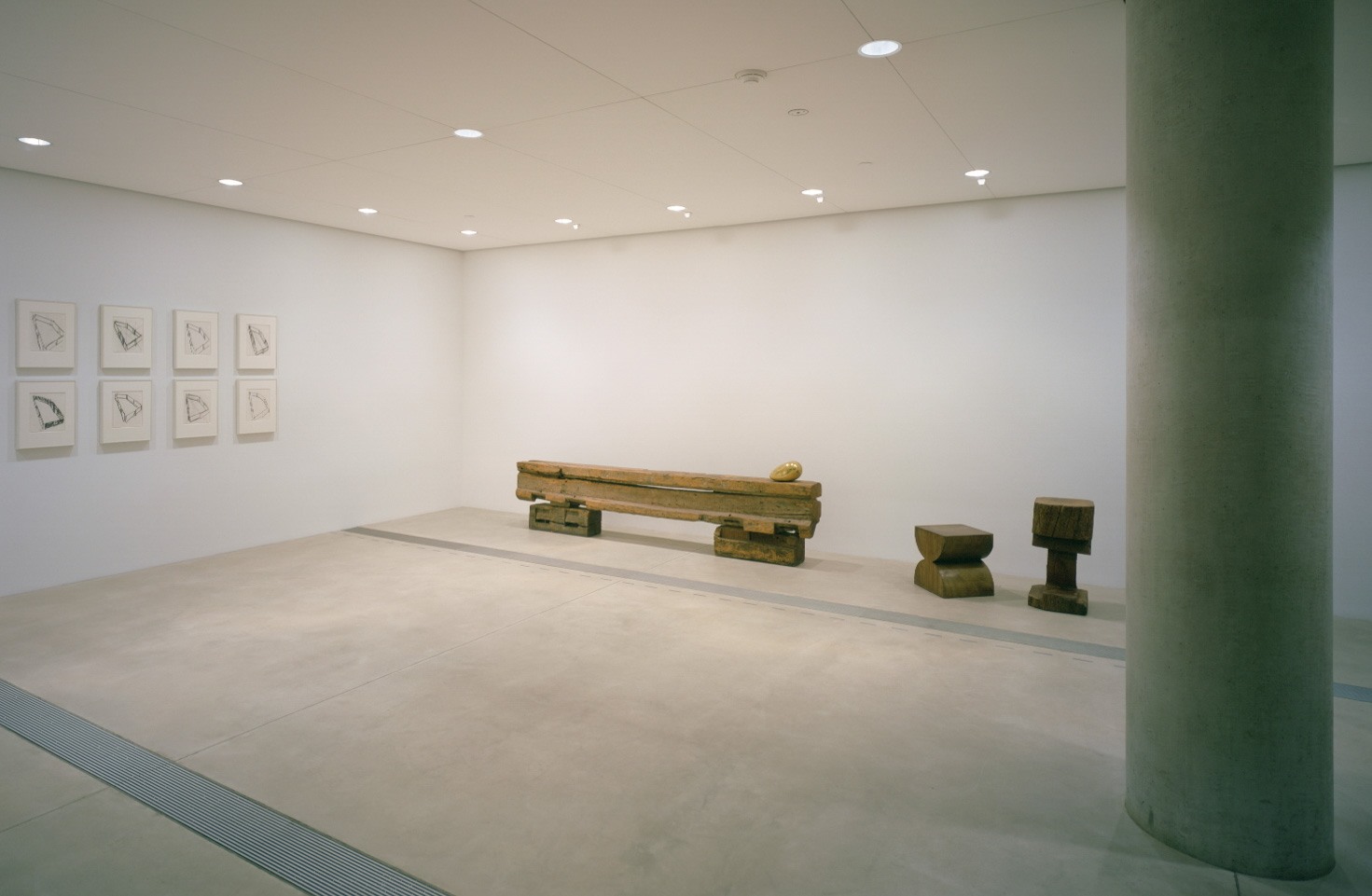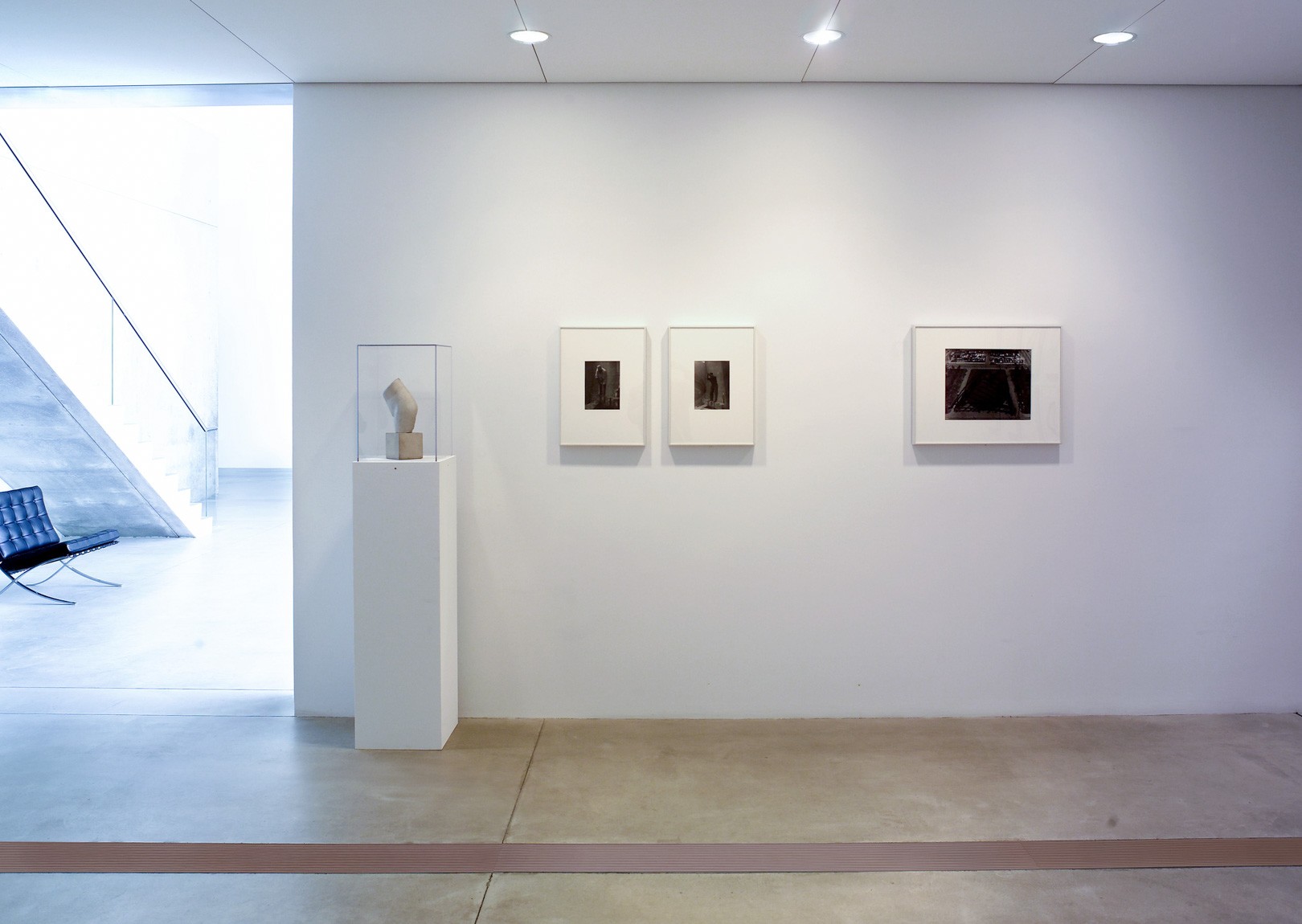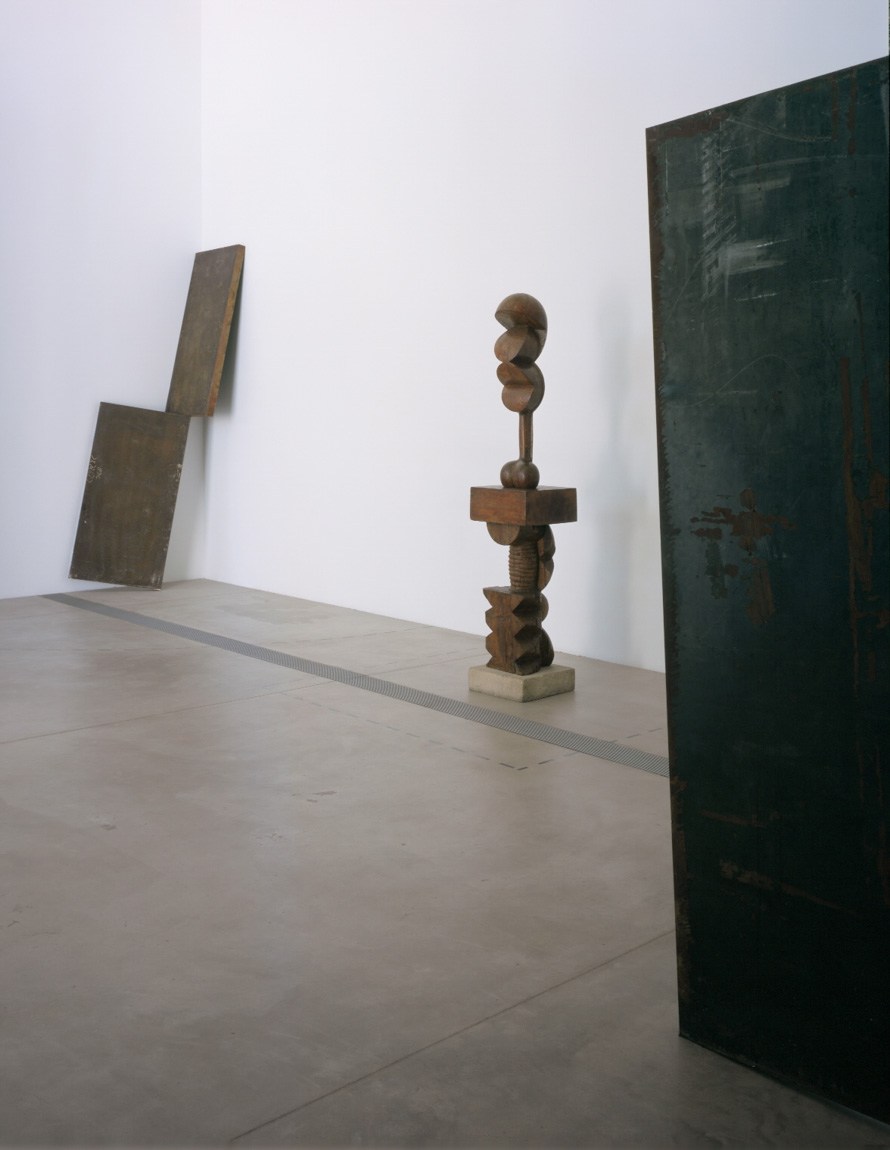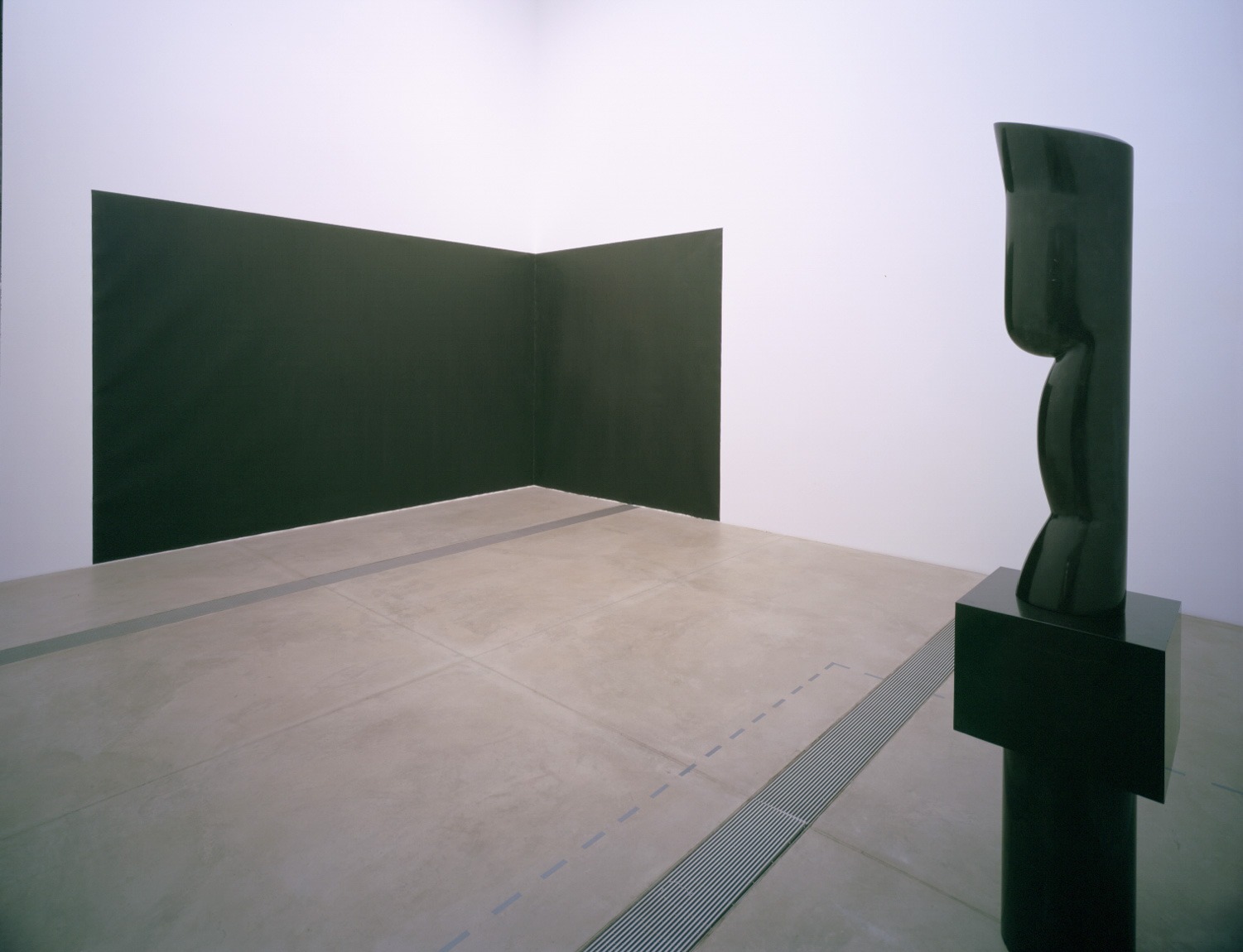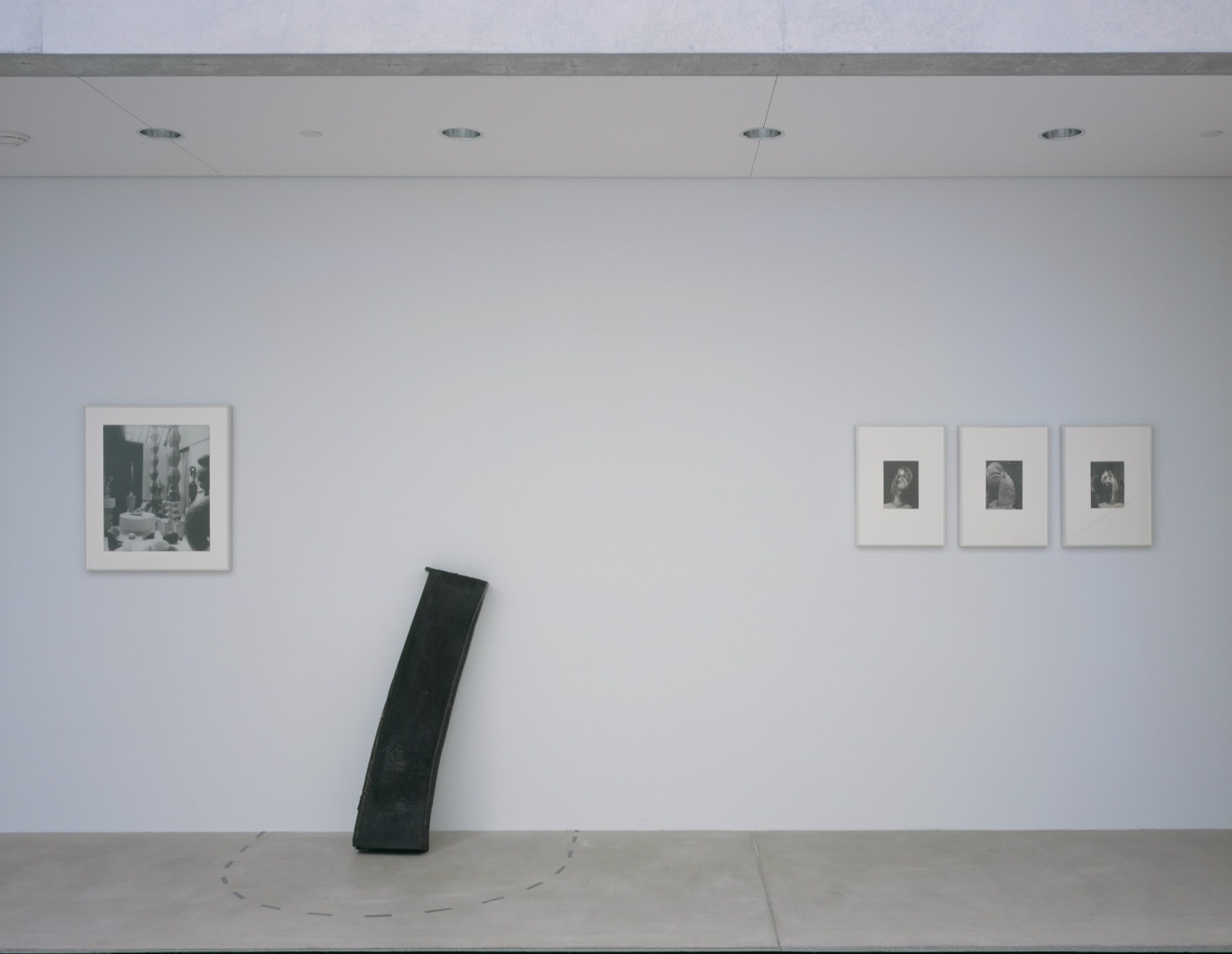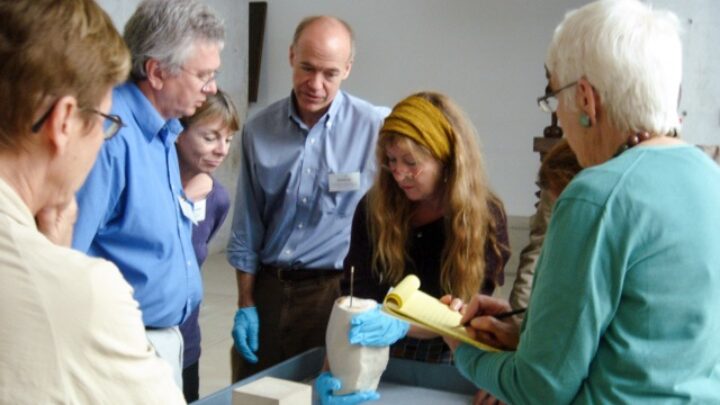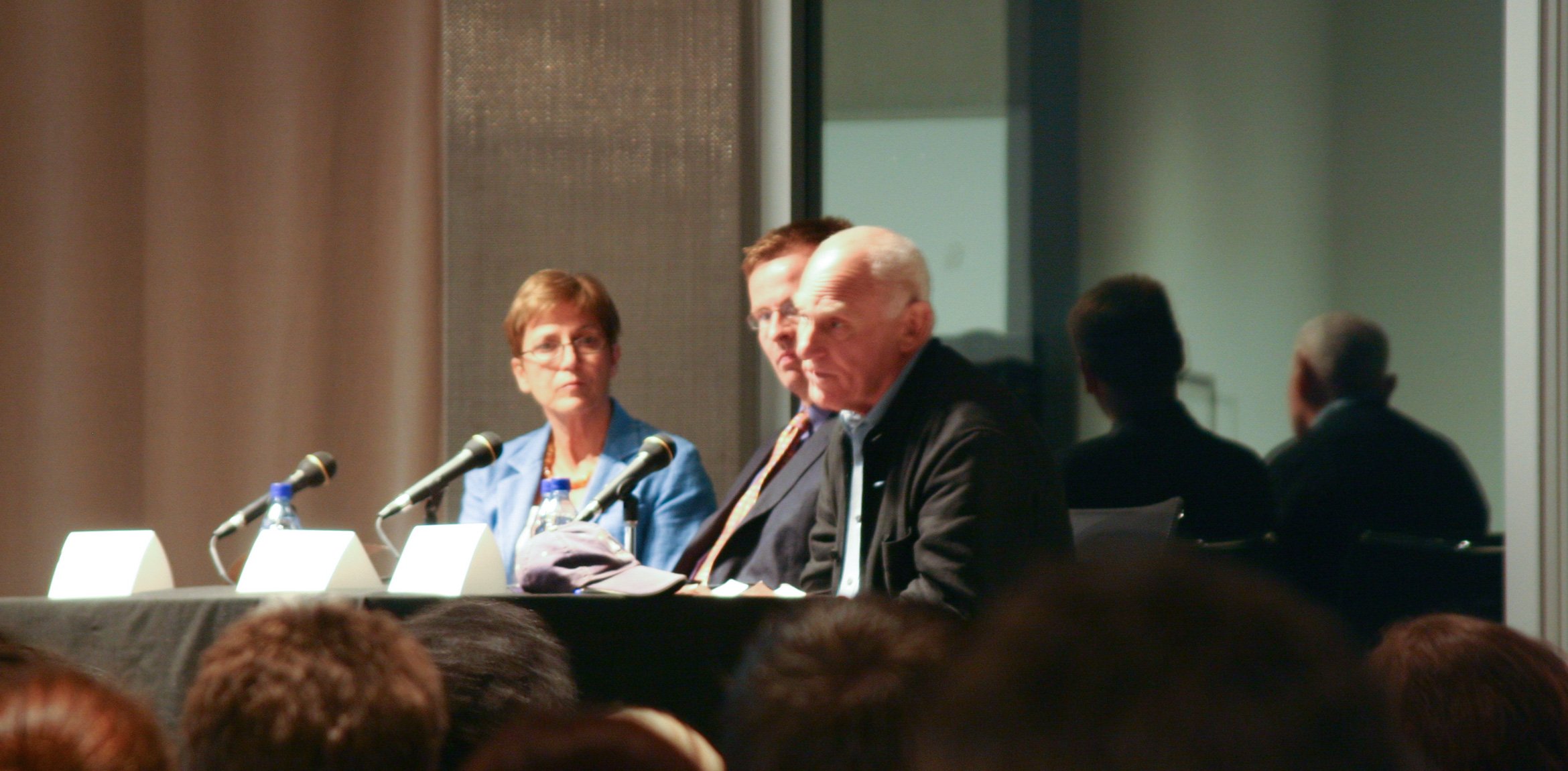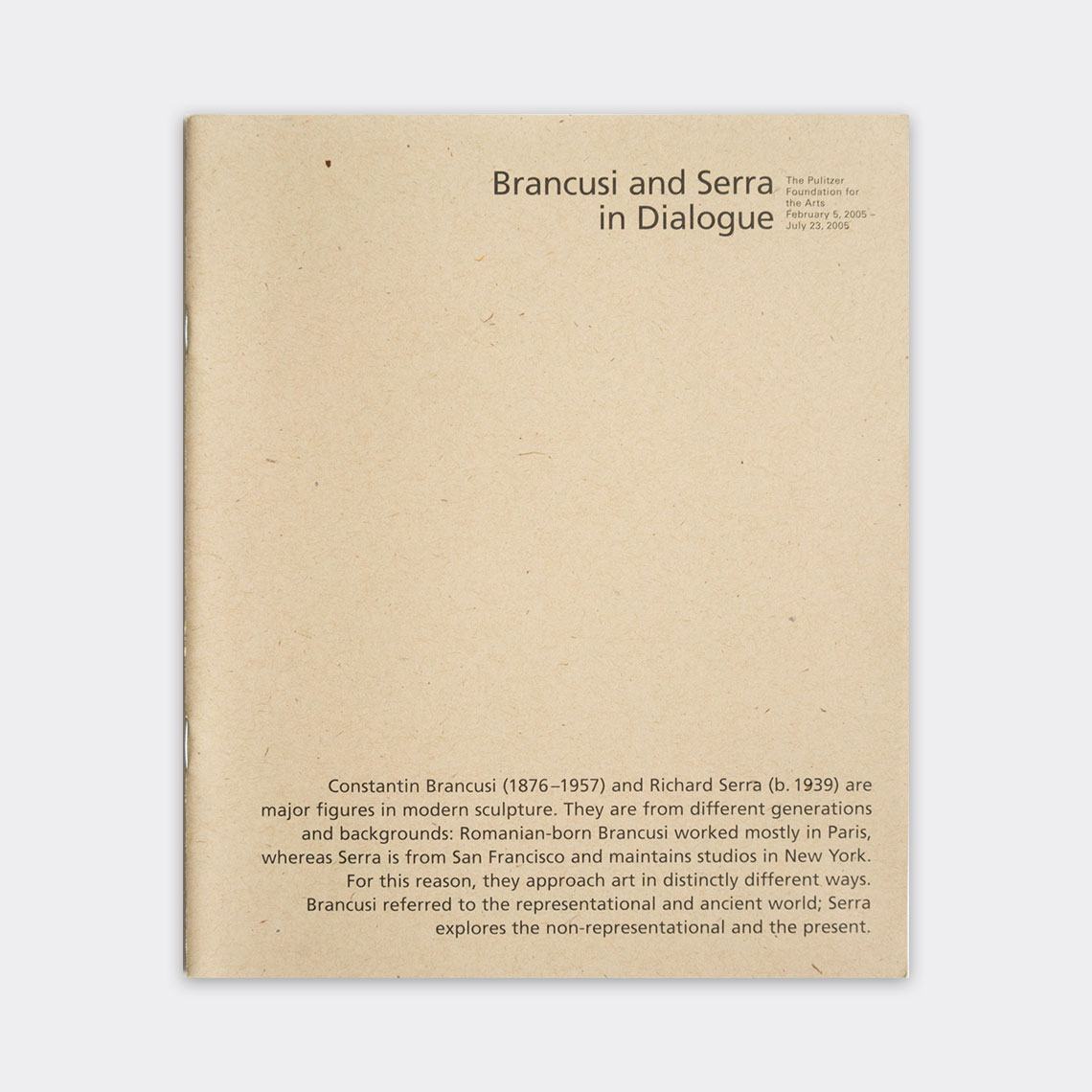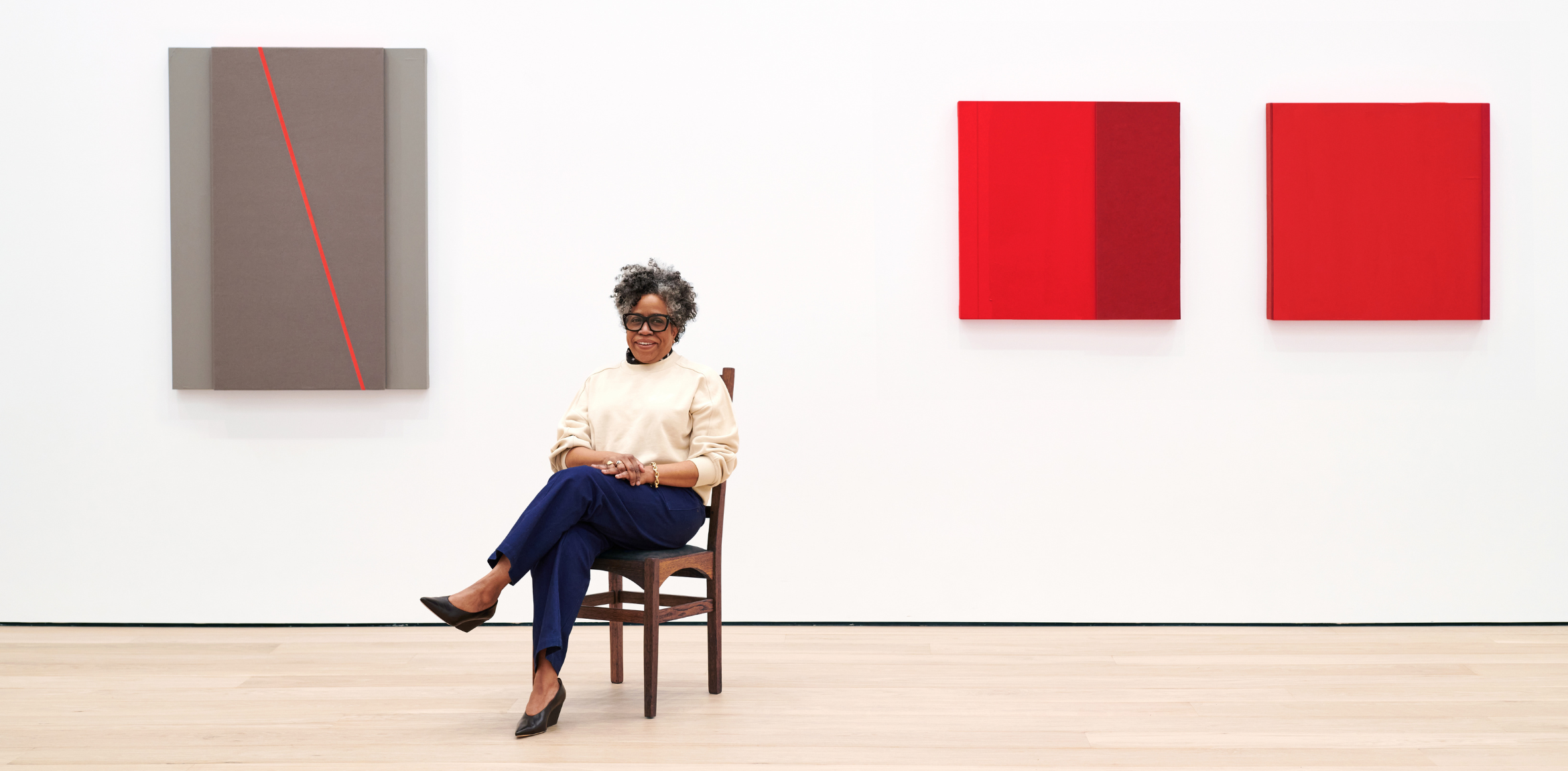Despite differences in generation and background, the works of Constantin Brancusi (1876-1957) and Richard Serra (b. 1939) reveal parallel approaches and responses to questions of form. They share a fascination with stacking elements, with spreading and concentrating volumes, and with stressing sculptural aspects of weight and material. At the same time, each artist maintains his singular identity and trajectory. Where Brancusi played with the role of the base, frequently making it a part of the sculpture, Serra rejects the base altogether and uses the floor, walls, and surrounding architecture as integral elements of work. This exhibition brought these two important figures into dialogue—not only with each other, but also with the surrounding architecture of the Pulitzer’s Tadao Ando-designed building.
While much of Brancusi’s work refers to the representational and the historical world, Serra’s explores the non-representational and the present. Through their respective experiments with materials, both artists make the viewer aware of sculpture in relation to its environment: in this case, the orderly contours of Ando’s architecture. This exhibition also established a metaphorical dialogue between media, with a particular attention to photography and sculpture—including a rare public viewing of photographs by Brancusi. Along with sculpture and drawings by Richard Serra, the exhibition presented sketches related to his sculpture Twain, a site-specific work installed in 1982 on a prominent city block in downtown St. Louis.
